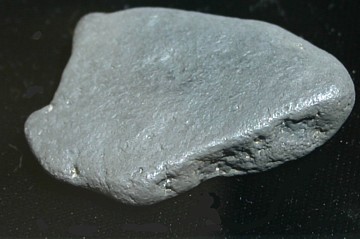
| SILVER MINERAL FACTS |  |
|
| The Gem and Mineral Collector's Photo Gallery by Nevada Outback |
|
. Silver Mineral Facts: Chemical Formula: Ag - Silver
Colors:
Silver White
Hardness:
2.5 to 3
Density:
10.1 to 11.1 Cleavage: None
Crystallography:
Isometric Luster:. Bright metallic luster when untarnished. Optics: (Refractive Index): Opaque |
Above: Native Silver, Norway |
|
Identification and Diagnostics
Occurrence,
Localities and Origins: Native silver has been found in the United States with native copper in the copper mines of Lake Superior where fine crystals have been found in the calcite veins cutting the copper-bearing rocks, and masses of small size in the native copper so abundant in the district. It is found in crystal groups at the Elkhorn Mine, Montana; in large masses in the silver mines at Aspen, Colorado. Is found, at present, in large quantities as platy masses, associated with various cobalt and nickel minerals, at Cobalt, Ontario, Canada. An important silver ore in the mines of Chihuahua, Guanajuato, Durango, Sinaloa and Sonora, Mexico. Occurs commonly in the mines of Peru. Was found in large masses, one of which weighed 500 pounds, in the mines at Kongsberg, Norway. The localities in which silver is found are too numerous to mention. It is one of the ores of the silver mines of Saxony and Bohemia. Silver is usually found in irregular masses, in flat scales, in fibrous clusters, and in crystal groups with arborescent or acicular forms. Sometimes the crystals are well developed, more frequently they exhibit only a few distinct faces, but in most cases they are so distorted that it is difficult to make out their planes. Pure silver is unknown. The mineral as it is usually obtained contains traces of gold, copper, and often some of the rarer metals, depending upon its associations. Return to the Mineral Collectors Information Page |
Above: Silver Specimen, Michigan |
|
 Native Silver Nugget, Fairbanks, AK |
||
Please note that the author, Chris Ralph, retains all copyrights to this entire document and it may not be reproduced, quoted or copied without permission.

NEVADA OUTBACK GEMS TURQUOISE AND JEWELRY